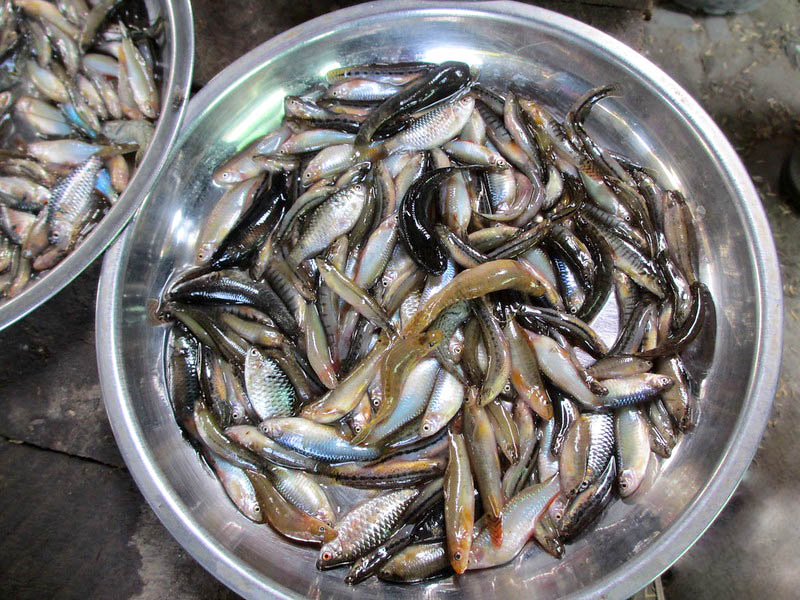Small Indigenous Species (SIS) and its importance

What is SIS?
Fish that reach a mature or adult life cycle stage of 25 cm, or 9 inches, are classified as SIS or Small Indigenous Species. Except, Heteropneustes fossilis is one SIS that can grow larger than 9 inches or 25 cm. With an abundance of natural food, room, and a suitable environment, diverse water bodies (ponds, beels, haors, baors, rice fields, floodplains, etc.) make ideal breeding and rearing grounds for SIS. They can reproduce in shallow, narrow water, they can move swiftly to other natural water bodies. As the rainy season progresses, their abundance increases, particularly when water bodies reach their maximum levels.
Puti, Darkina, Mola, Chanda, Koi, Taki, Cheng, Tengra, Gochi, and Magur are the most frequently caught species of SIS. There is enough SIS in freshwater marshes and rivers in the Indian subcontinent. From the nearby water bodies, the small fisher capture SIS, which they then bring to the market and earn livelihood.
Significance of SIS:
SIS is an important food element that provides proteins as well as a range of vitamins and minerals. Small fish have the highest nutritional content of all of them due to inhabit a variety of rich environments. They are often eaten whole, including the skull, bones, and eyes. SIS offer superior nutrition because they make use of all the nutrients including micronutrients that are accessible. The high protein, fatty acid, vitamin, and mineral content of these fish makes them valuable. Furthermore, in comparison to other food sources, little fish are a repository of distinct minerals (e.g., Zn, P, Mg, Ca, etc.).
The “Small Indigenous Species” or SIS plays a critical role in mitigating malnutrition and safeguarding the economic and nutritional security of rural people. Women are typically more susceptible to food insecurity, which can lead to undernourishment and malnutrition starting at a young age. One food item that enables rural residents to meet the appropriate demand for these nutrients and ends food insecurity is small fish. Since eating SIS is required to cure serious ailments like night blood disease and vitamin A insufficiency, it is regarded as one of the simplest methods of cure.
Rich fields, wetlands, beels, home ponds, abandoned water bodies, irrigation and drainage channels, and other lentic and lotic water systems are ideal habitats for the SIS because they are prolific breeders and require little to no management. It is prudent to integrate these tiny native species into polyculture systems because doing so raises total pond fish productivity, as demonstrated by current aquaculture techniques. The various ecological services associated with SIS are valuable aquatic life resources that should be exploited sustainably. Because SIS is so abundant and valuable as food, it must be used going forward, particularly locally. Techniques to boost SIS abundance through rice fish farming or polyculture may be a practical way to sustain demand at the regional level in the relevant geographic area. In addition to their function in ensuring food security, certain SIS species are highly valued.
Farhana Islam
Agriculturist, Researcher
Fisheries Resource Management, CVASU
